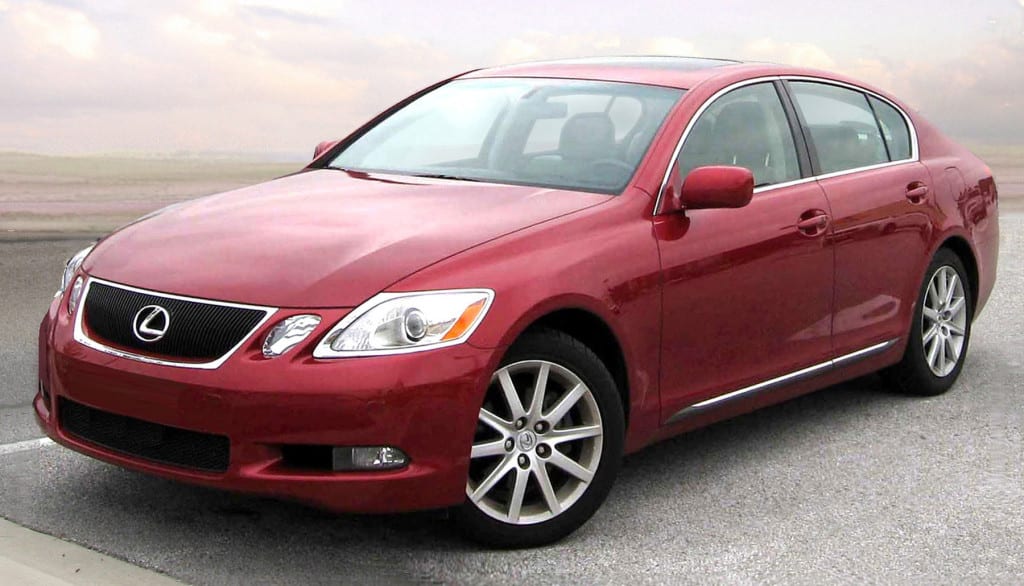Lexus, the luxury division of Toyota, has only been in existence since 1989. But in that short twenty-six year span, Lexus has solidified its name as synonymous with innovation. Celebrated for its top-of-the-line vehicles and bulletproof reliability, the Lexus brand is increasingly iconic.
If you’re shopping for a Lexus in PA then you already know that Lexus vehicles are tough to beat. They are beautiful, performance-driven machines, with unparalleled safety and security. When it comes to reliability, the Lexus Research and Design team have made Lexus vehicles among the top in the industry. As a consumer, if you purchase a Lexus, you’ll be covered by the best warranty programs and customer service on the market.
You already know you’re getting a Lexus. But take a look at the amazing work the already iconic Lexus is doing to promote the brand’s spirit of inspiration and innovation. After you see some of the amazing creativity driving Lexus behind the scenes, you will be eager to get behind the wheel even faster in support of the Lexus machines and the Lexus message.
Lexus Knows How to Maneuver
Of course, the Lexus marketing team is aware of the brand’s increasing popularity and influence. To increase its influence even further, it has targeted new and younger audiences to meet the Lexus line through some very creative media maneuvers.
Mind you, the Lexus brand isn’t old enough to be considered an “old person’s car,” but it also hasn’t exactly been known for keeping up with up-to-the-second trends. Again, the company’s dedication to reliability means that new features and technologies roll out slowly in order to avoid error and recalls that seem to consistently plague other automakers.
Lexus has always manufactured cutting edge cars, but is now promoting those cars in a very subtle, almost invisible manner through emerging popular media outlets.
Take, for example, the L Studio.
Launched in 2008, the L Studio was created from the Lexus motto, “Inspiration for Innovation.” A broadband channel, the L Studio features short original films, which range from narrative, in other words, traditional storytelling, to short documentaries.
When it began in 2008, the L Studio screened “Web Therapy,” starring Lisa Kudrow, as its first series. In the show, Kudrow plays a therapist who treats patients in therapy sessions conducted over webcam. Ultimately, the series was picked up by Showtime in 2011, proving that, once again, Lexus was onto something.
Lexus Gets Even Better
From that initial series, the L Studio has grown to include the inspirational collection, “It Got Better,” now in its second season.
During these approximately eight minute clips, celebrities from the LGBT community are interviewed about how they overcame their own personal struggles to ultimately arrive where they are today.
Past interviews have included actress and comedian Jane Lynch, interior designer and TV host, Nate Berkus, fashion expert and consultant, Tim Gunn, and actor George Takei of “Star Trek” fame.
You might ask, why? What’s the point? And what, for goodness’ sakes, do any of these people have to do with Lexus?
It would be easy to overlook the connection, I suppose. After all, these interviews are not about why these celebs love their Lexus vehicles. But here, again, is the subtle genius of the Lexus brand. The marketing team refuses to use the L Studio as a direct pitch for their product. No one likes sales pitches, but everyone likes to be entertained.
So instead, the L Studio spotlights those individuals who embody the spirit of Lexus. They are iconic personalities who have had to overcome struggle and can therefore inspire others to do the same in order to achieve their goals, and innovate their own lives.
And, while Lexus models might roll out slowly, the L Studio is keeping right on the pulse of current social issues and popular trends.
Check out the following, for example. An “It Got Better” segment featuring Laverne Cox, the transgender star of the hit show, “Orange is the New Black.”
Lexus Redefines “Low-Hanging Fruit”
When it comes to more documentary-type content, the L Studio has created a series called, “Beyond the Crush.”
In it, the viewer is treated to a seven minute or so introduction to some extraordinary and unexpected winemakers who are crafting extremely high-end wines.
While these stories are certainly inspirational in their own way, the connection here reflects the connotation of high-end luxury, elite products made accessible, which Lexus represents.
This is really only the highlight reel of the programs offered on the L Studio broadband channel.
But, for a more Lexus-specific media example, we need to turn to music.
Lexus Cruises to Its Own Beat
While the L Studio is a media maneuver executed by the Lexus marketing team, the music scene has been independently celebrating the Lexus brand for a long time. Long enough, actually, that Lexus just landed on a very exclusive list.
Earlier this week, Lexus made the list of The 25 Most Iconic Hip-Hop Cars.
Like I said, Lexus is anything but an old-man brand. In fact, since the Lexus GS 300 arrived in the United States in 1993, rappers have included references to the Lexus brand in their lyrics because it was considered a symbol of status, and a fresh one at that.
Hip hop stars Jay-Z, Kanye West, and the late Biggie Smalls have all rapped about Lexus, with Jay-Z’s music video for “99 Problems” featuring the rapper rolling along tough city streets in a sleek, head-turning GS 300.
Although there are plenty of references to Lexus cars (Club Lexus is currently maintaining what is so far an eleven-page thread trying to list all of them), the Lexus GS 300 is the only model specified on the list.
So, what is the GS 300?
The Lexus GS 300 – A Crowd Pleaser
A rear-wheel drive luxury sedan, the Lexus GS 300 delighted drivers and passengers with its comfortable and quiet ride. But the first generation struggled to compete with its European rivals, despite its popularity, and was priced significantly higher than others on the market.
Manufactured between 1993-1997, the styling distinguished the GS 300 from the rest of the domestic and imported luxury sedans and passengers loved its spacious seating and roomy interior.
Outfitted with a 3.0-liter inline-6 engine, able to get 220 horsepower, the majority of the models from this first generation were operated by a four-speed automatic transmission. However, the 1996 and 1997 model years offered a five-speed automatic transmission option.
Probably the easiest to find of the three generations, the second generation of the Lexus GS 300 luxury sedans, produced between 1998 and 2005, carried over the first generation’s engine, but enhanced it with variable valve timing.
The third generation, however, was where the rubber met the road for this Lexus model. Although all generations of the GS 300 proved popular among consumers, the third generation, released in 2006 and lasting only one year, featured the latest and most cutting edge technology, surrounded by luxurious materials.
Equipped with a 3.0-liter V6 engine, generating 245 horsepower and operated by a six-speed automatic transmission, the GS 300 was performance-driven, able to reach sixty miles per hour from a standstill in seven seconds. Although this generation of GS also featured standard rear-wheel drive, an all-wheel drive system was also available.
Standard features included HID headlights, wood trim, leather upholstery, dual-zone automatic climate control, stability control, and an optional Mark Levinson sound system – through which to blast your favorite hip hop artists, obviously.
Whether you’re shopping for a used, certified preowned, or brand new Lexus vehicle, you’re sure to be inspired by the innovative design and reliable performance that has driven the Lexus brand for a quarter of a century. This is just the beginning of the Lexus legacy…






